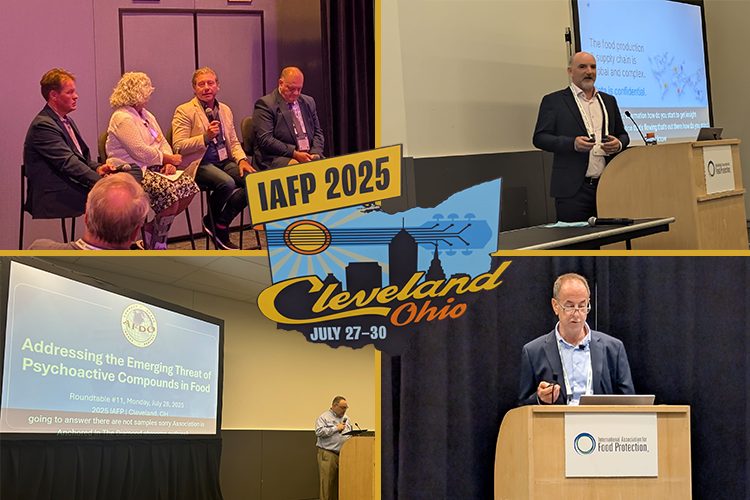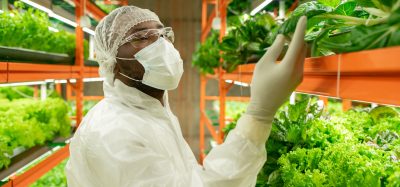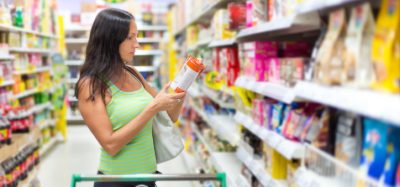FSMA 204, psychoactive compounds and more: food safety insights from IAFP 2025
Posted: 31 July 2025 | Ben Cornwell | No comments yet
As IAFP 2025 draws to a close, New Food’s Assistant Editor Ben Cornwell highlights four key sessions that shaped this year’s vital food safety discussions.


From legal grey areas to AI breakthroughs, this year’s IAFP conference (27-30 July 2025) spotlighted the challenges and opportunities that are redefining food safety in real time.
Against a backdrop of increasingly complex supply chains and rising consumer expectations, industry leaders, regulators and researchers gathered in Cleveland to address the realities shaping the future of food.
Across four standout sessions, one theme stood out: modernisation is no longer optional. From data infrastructure to cold chain logistics, the sector is under pressure to move faster, think bigger and work more collaboratively than ever before.
The countdown to compliance
Urgency set the tone for “Crossing the Finish Line: Industry’s Race to FSMA 204 Compliance.”
The supply chain is bigger than the 48 continental states or 50 states including Alaska and Hawaii; ingredients come from absolutely everywhere.”
Quincy Lissaur, SSAFE
With deadlines extending but still approaching, panellists explored the technological and cultural shifts needed to meet new traceability requirements that promise faster and more accurate responses during public health emergencies.
The conversation quickly turned to interoperability, or the lack of it. Many food businesses still rely on fragmented systems and manual data processes, making real-time traceability a major challenge. While large corporations may have the resources to adapt, smaller players face disproportionate financial and logistical burdens.
But regulation tells only part of the story. Consumer demand for transparency is rapidly expanding, pushing companies to track more than just what’s on the Food Traceability List. As Quincy Lissaur of SSAFE pointed out: “The supply chain is bigger than the 48 continental states or 50 states including Alaska and Hawaii; ingredients come from absolutely everywhere.”
To address these gaps, initiatives like the Partnership for Food Traceability (PFT) are working to define best practices and strengthen public–private collaboration.
AI gets practical and powerful
While traceability is being reshaped by regulation, artificial intelligence (AI) is already transforming how food safety is managed.
Data is like the treasure box. It’s just hidden in the dark waiting for us to explore it.”
Amani Babekir, Ecolab
In “Cutting Through the Hype: Real-World Benefits of AI in Food Safety,” speakers moved beyond buzzwords to highlight how AI is delivering real-world impact today.
Examples included predictive models based on health inspections that help identify compliance risks early, and generative AI used to analyse root causes and support corrective actions in microbial management. AI also helps integrate data across the fragmented food supply chain and extract insights from unstructured sources.
Despite its potential, speakers stressed that AI is a tool and not a replacement for human expertise. It requires oversight to ensure accuracy and avoid misleading outputs.
“Data is like the treasure box,” said Ecolab’s Amani Babekir. “It’s just hidden in the dark waiting for us to explore it.”
Even regulators are embracing this future. During the symposium, the US Food and Drug Administration (FDA) discussed its collaboration with Western Growers and urged more professionals to get involved through IAFP’s Data Management and Analytics Professional Development Group.
The grey zone of psychoactive foods
But not all risks are technical. The growing availability of psychoactive compounds in food and drink is presenting regulatory challenges few anticipated.
Labs are not a service, they are a science”
Sinisa Urban, Maryland Department of Health
The session “Addressing the Emerging Threats of Psychoactive Compounds in Food” brought this into sharp focus, triggered by the Diamond Shruumz outbreak, which caused severe neurological symptoms in more than 160 people.
The issue isn’t just legality – it’s detection. These products often exist in regulatory grey areas that delay recognition and complicate response. Outdated lab methods and fragmented oversight have added to this delay, exposing cracks in the current food safety system.
Speakers called for urgent investment in laboratory modernisation and better coordination between public health agencies, poison control centres and regulatory bodies. The stakes are high, not only for response but for public trust.
“Labs are not a service, they are a science,” said Sinisa Urban of the Maryland Department of Health. This served as a reminder that lab infrastructure is foundational to outbreak detection and emerging threat surveillance. The public, meanwhile, assumes anything on the shelf is safe, signalling a communications challenge that will only grow more complex as new products blur traditional boundaries.
Cold chain, hot topic
Even long-standing standards came under scrutiny.
We all need to move together. There’s a whole lot that needs to happen, but [it’s] probably more about everybody getting together and agreeing than about the science.”
Ian Jenson, FIRST Management
In “Warming the Frozen Food Supply Chain: Food Safety and Spoilage Implications,” experts revisited the near-universal -18°C benchmark for frozen food storage, asking whether warmer targets like -15°C or even -12°C could reduce energy use without compromising safety.
Early findings suggest a nuanced answer. While meat products remain stable at higher temperatures, vegetables degrade more quickly. This points to a need for product-specific shelf-life strategies and smarter cold chain monitoring. But more than science, it’s about coordination.
As Ian Jenson of FIRST Management noted, “We all need to move together. There’s a whole lot that needs to happen, but [it’s] probably more about everybody getting together and agreeing than about the science.” For real progress, suppliers, logistics partners and regulators will need to align around shared standards and shared risk.
The takeaway
What emerged across IAFP 2025’s key sessions was not just a to-do list but a mindset shift. Food safety is no longer confined to contamination checklists and recall drills; it now touches everything from digital resilience and lab investment to climate adaptation and public perception.
Whether it is implementing FSMA 204, deploying AI responsibly, responding to new product categories like psychoactive foods, or rethinking the economics of refrigeration, the industry is being asked to move quickly and work collaboratively.
If this year’s conference is any indication, that transformation is already underway. But its success will depend on how well the sector can act together.
Related topics
Contaminants, Food Safety, Frozen Foods, Ingredients, Refrigeration and freezing, Regulation & Legislation, Robotics & automation, Supply chain, Sustainability, Technology & Innovation, Traceability









